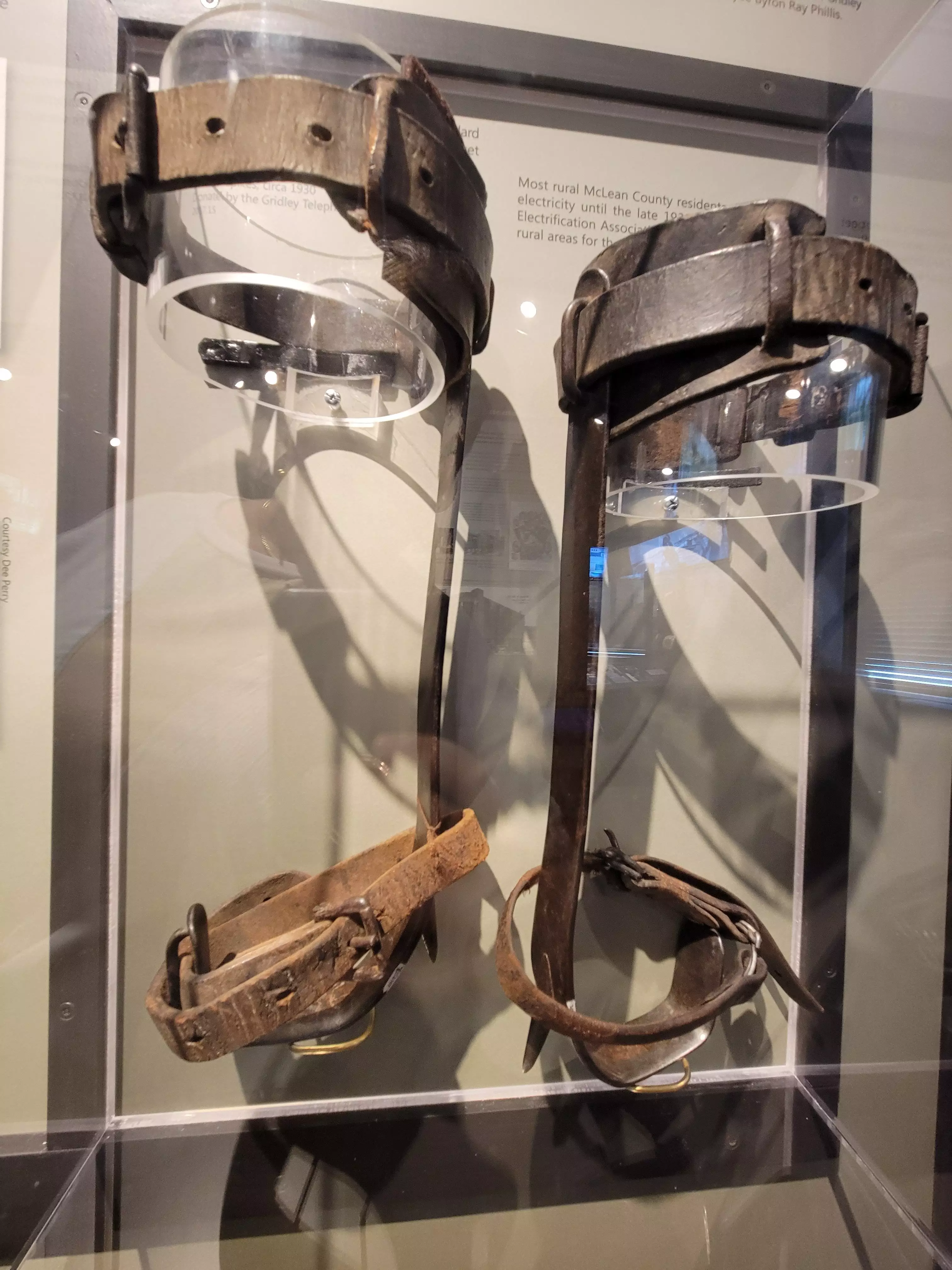Powering Rural Communities
Bloomington residents began to electrify their homes in the late 1880s. But rural McLean County residents had to wait.Featuring:Walter R. Steward, (1892 – 1960), electric lineman and managerWalter R. Steward (1892-1960) worked for Illinois Power in Bloomington, but in 1913 was asked to build an electrical substation for the Gridley Electric Company.
Walter managed the construction of Gridley’s new substation and installed a new generator, making it possible to electrify all of the village’s homes. Before he completed the project, Illinois Power asked him to remain as a lineman and manager of the substation.
Walter liked working in Bloomington, and working in the small town of Gridley would be very different. But the job sounded challenging, and Walter would be in charge.
Would you have taken the job? What do you think Walter did?
Walter decided to stay and manage the substation — perhaps influenced by a lovely young Gridley resident that he married in 1916. As the Gridley substation manager and lineman, Walter repaired power lines in Gridley, as well as Flanagan, Graymont, Meadows, Towanda, Lexington, and Chenoa.
Electrical work was not without risks. As a lineman Walter climbed the poles to make repairs.
Linemen spikes, circa 1930

View this object in Matterport
Linemen spikes and a safety belt were the standard equipment used to climb electric poles. Bucket lifts weren’t developed until after WWII.
Donated by: Gridley Telephone Museum
2017.15

Most rural McLean County residents did not get electricity until the late 1930s, when the Rural Electrification Association (REA) offered loans to rural areas for the installation of electrical lines.
 Making a Home
Making a Home
 A Community in Conflict
A Community in Conflict
 Working for a Living
Working for a Living
 Farming in the Great Corn Belt
Farming in the Great Corn Belt
 Abraham Lincoln in McLean County
Abraham Lincoln in McLean County







